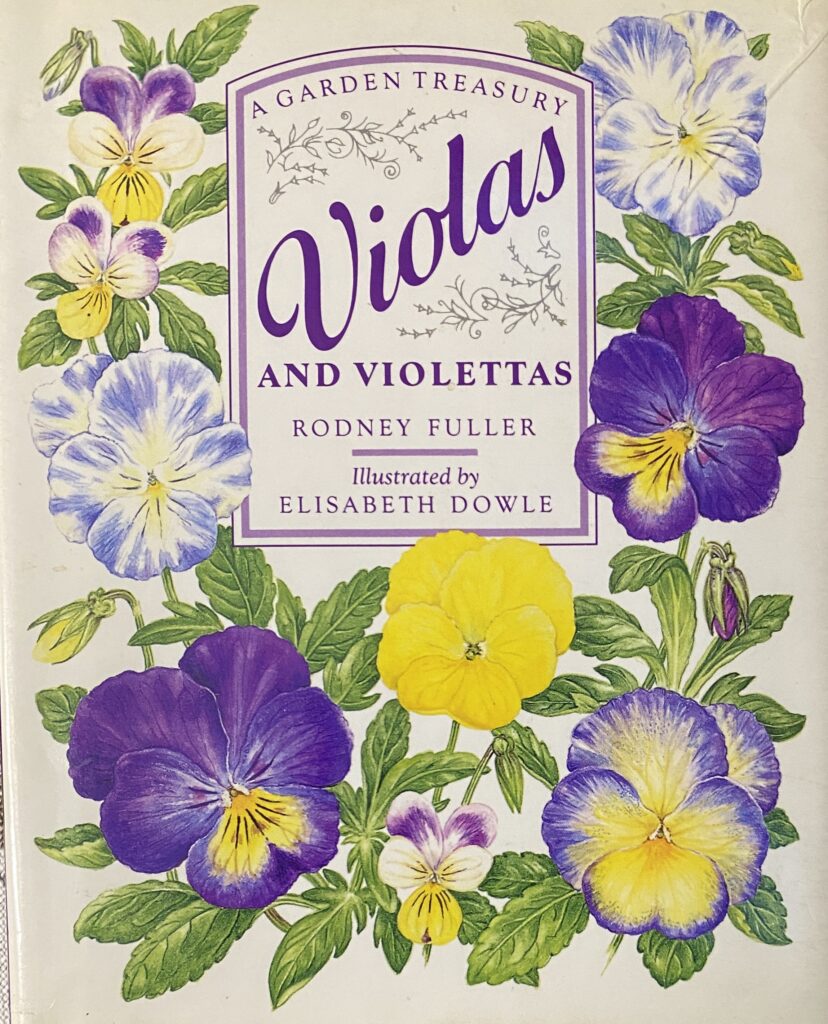
A while back, I embarked on a search to find and buy all the books about violets, pansies, violas, and yes, violettas, that I could find.
I am grateful that the flower genus I’ve chosen to obsess over… hmmm… is it an obsession? Let’s just say “the flower genus I’m strongly interested in” doesn’t have too many books written about it.
Like roses, for example. I don’t believe it would be possible to find and buy every book written about roses.
But the genus Viola?
Do-able.
And I thought I’d done it until a few weeks ago when I was searching online for something else (who knows what!) and discovered a charming little book about violas I didn’t have.
I have it now! Viola and Violettas by Rodney Fuller, Illustrated by Elisabeth Dowle was published in 1994. Designed by Clare Clements and published by HarperCollins Publishers, London, it was printed and bound in Italy. (Good used copies are still available, as they say.)
This sweet little book measures about 4-1/2 inches wide and 5-3/4 inches tall. It’s pretty enough to be left out as a piece of art or as a curious little book that someone might pick up and flip through. And the good news is that even if a copy didn’t have its slipcover, the cover inside is printed with the same image.
But what is a violetta, you are asking yourself?
And won’t don’t you see violettas for sale anywhere?
Thanks for asking. Back in the late 1800s when they were breeding violas (and pansies) and showing them in flower shows, they decided that violas with smaller flowers measuring between 1 to 1-1/2 inches wide would be in their own class, violettas. Later, they revised the size requirement down to 1/2 to 1 inches wide. And they had to have a good scent.
In other words, violettas were/are miniature violas with scent.
Today no one calls miniature violas “violettas” and even spell-checker keeps flagging violetta as an unknown word.
The book, Violas and Violettas, starts with a review of what violas and violettas are and how to care for them, but is mostly filled with beautifully illustrated pages describing some of the varieties available when the book was published. I recognized a few of the variety names like ‘Prince Henry’ which, when I looked it up on Botanical Interests, I discovered has been promoted to ‘King Henry.’
Now, here is how I know I’m not completely obsessed with violas. A completely obsessed person would go through this book and try to find good sources for all the varieties.
Hmmm… first listing is for Johnny Jump Ups. Too easy to find. Maybe I could find all the varieties listed?
Next up ‘Purple Dove.’
Nope, can’t find it anywhere… time to stop looking.
I guess I’m not as obsessed as I thought!


Leave a Reply